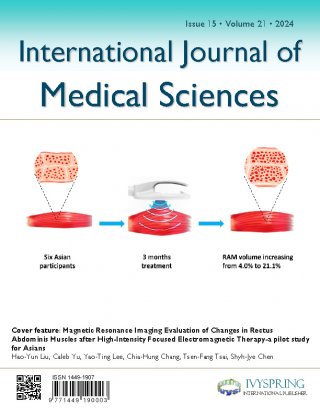Comparison of myopic control between orthokeratology contact lenses and defocus incorporated multiple segments spectacle lenses
IF 3.2
3区 医学
Q1 MEDICINE, GENERAL & INTERNAL
引用次数: 0
Abstract
Purpose: The purpose of this study was to compare the differences in myopic control effects between orthokeratology (OK) contact lenses and defocus incorporated multiple segments (DIMS) spectacle lenses./nMethods: A retrospective cohort study was conducted that included patients who had received OK lens, DIMS spectacle lens or single-vision spectacle treatments. A total of 54 eyes from 27 individuals, 38 eyes from 19 individuals and 42 eyes from 21 individuals were enrolled into the OK lens, DIMS and control groups, respectively. The primary outcomes were the changes in the spherical equivalent refraction (SER) and axial length (AXL) among the groups. A repeated-measure ANCOVA was adopted to calculate the SER progression and AXL elongation of the OK lens group compared with the DIMS group./nResults: The difference in the SER progression was clinically non-significant in the OK lens group compared with the DIMS and control groups (P = 0.001). The total AXL elongation results were similar between the OK lens and DIMS groups, but these were lower than in the control group (P = 0.005). The repeated-measure ANCOVA revealed that the SER progression difference during the study interval was clinically non-significant in the OK lens group when compared with the DIMS group (P = 0.028). The AXL elongation results between the OK lens and DIMS populations did not illustrate a significant difference (P = 0.607). In a subgroup analysis of moderate astigmatism, better AXL control was observed in the DIMS subgroup compared with the OK lens subgroup (P = 0.016)./nConclusions: The OK lens demonstrated a clinically non-significant effect on the SER and AXL controls compared with the DIMS spectacle lens.比较矫形角膜接触镜和散焦多片式眼镜片的近视控制效果
目的:本研究的目的是比较正角膜接触镜(OK)和散焦多片式眼镜片(DIMS)在近视控制效果上的差异:进行了一项回顾性队列研究,研究对象包括接受过 OK 镜片、DIMS 镜片或单光眼镜治疗的患者。共有 27 人的 54 只眼睛、19 人的 38 只眼睛和 21 人的 42 只眼睛分别被纳入 OK 镜片组、DIMS 镜片组和对照组。主要结果是各组之间球面等效屈光度(SER)和轴向长度(AXL)的变化。采用重复测量方差分析计算 OK 镜片组与 DIMS 组相比的球面等效屈光度(SER)和轴向长度(AXL)的变化:与 DIMS 组和对照组相比,OK镜片组的 SER 进展差异无临床意义(P = 0.001)。OK 镜片组和 DIMS 组的 AXL 总伸长率结果相似,但低于对照组(P = 0.005)。重复测量方差分析显示,与 DIMS 组相比,OK镜片组在研究间隔期间的 SER 进展差异无临床意义(P = 0.028)。OK 镜片组和 DIMS 组之间的 AXL 拉长结果没有显著差异(P = 0.607)。在中度散光亚组分析中,与 OK 镜片亚组相比,DIMS 亚组的 AXL 控制更好(P = 0.016):与 DIMS 镜片相比,OK 镜片对 SER 和 AXL 控制的临床效果不显著。
本文章由计算机程序翻译,如有差异,请以英文原文为准。
求助全文
约1分钟内获得全文
求助全文
来源期刊

International Journal of Medical Sciences
MEDICINE, GENERAL & INTERNAL-
CiteScore
7.20
自引率
0.00%
发文量
185
审稿时长
2.7 months
期刊介绍:
Original research papers, reviews, and short research communications in any medical related area can be submitted to the Journal on the understanding that the work has not been published previously in whole or part and is not under consideration for publication elsewhere. Manuscripts in basic science and clinical medicine are both considered. There is no restriction on the length of research papers and reviews, although authors are encouraged to be concise. Short research communication is limited to be under 2500 words.
 求助内容:
求助内容: 应助结果提醒方式:
应助结果提醒方式:


